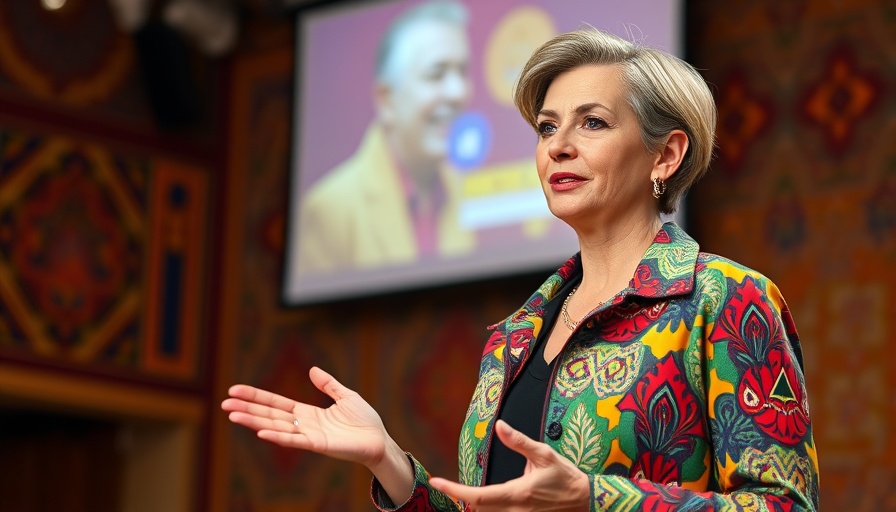
Reimagining Knowledge: The Essence of Local Expertise
In the captivating TEDx talk by Ramya Kumar, titled How do we pick our experts?, a powerful narrative emerges—a narrative that challenges conventional notions of expertise and sheds light on the often-overlooked local knowledge rooted in communities worldwide. The essence of this talk resonates deeply, urging us to question the established narratives that have traditionally been written by a select few.
In How do we pick our experts?, the discussion dives into the importance of local knowledge in reshaping our understanding of expertise, sparking deeper analysis on the implications for public health and education.
At the crux of Kumar's discussion is the striking example of the Victorian Falls, a natural wonder that, while credited to David Livingston, had long been known to the local Toala and Sosi communities long before his so-called 'discovery'. This serves as a poignant reminder of how history often overlooks native narratives, creating a cycle where knowledge and expertise are mainly associated with colonial legacies. This nucleus of knowledge challenges the stereotypes of who can be considered an "expert" and encourages broader inclusivity in acknowledging local contributions.
Decoding Epistemicide: The Silent Erasure of Local Knowledge
The term epistemicide emerges in Kumar's talk as a critical concept—the systematic erasure of local knowledge under colonial rule. She illustrates this through the delayed recognition of Dr. Jean-Jacques Muyembe, a Congolese scientist, who played a pivotal role in discovering the Ebola virus yet remained overshadowed by Western counterparts. This historic oversight reflects the pervasive issue of epistemicide, which not only hampers scientific progress but also devastates local communities whose heritage and knowledge are systematically undermined.
Lessons from History: The Power of Indigenous Knowledge
Kumar's narrative takes us on a historical journey showcasing the advanced public health practices of ancient African civilizations such as Great Zimbabwe, which effectively managed communal health through innovative water management systems. These examples emphasize the depth of understanding indigenous cultures have towards their environment and health, contradicting the dominant narrative that often positions western methodologies as superior.
Community-Driven Solutions: The Path Ahead
The importance of community engagement surfaces as Kumar highlights the successes of local participation in health research, particularly surrounding HIV prevention in Zambia. The empowerment of local experts not only leads to effective solutions but also fosters innovation and creativity within their own societies. Despite the vast resources of larger scientific institutions, it is often the local insights that drive meaningful change. This understanding sparks new ideas and perspectives, empowering communities to take ownership of their health outcomes.
Shifting Paradigms: Valuing Local Expertise in Global Challenges
Kumar aptly points out that the global challenges we face today—be it climate change, public health crises, or social inequalities—demand solutions that incorporate diverse forms of knowledge and expertise. As climate action becomes increasingly critical, drawing from local wisdom could lead to breakthroughs in addressing these pressing issues. It is a call to action for all professionals to reflect on who we consider experts and to embrace a more inclusive understanding of contributions to knowledge.
Embracing a New Future: Collaboration as a Driving Force
Ultimately, Kumar's TEDx talk is not merely a critique of existing systems, but a clarion call for collaboration. It insists that true progress arises when diverse voices come together, drawing from historical knowledge while also paving pathways for future discoveries. She emphasizes the importance of crediting local knowledge to ensure that indigenous practices and teachings are preserved for generations to come.
Kumar’s insights illuminate a path toward a more equitable future where local knowledge is not only respected but central to global endeavors. As we consider solutions to contemporary issues, adopting this collaborative ethos could unleash immense potential, driving innovation in ways previously unimagined. Therefore, it is crucial for both individuals and institutions to actively seek out and engage with local expertise in their quest for meaningful solutions.
It is time we recognize the power of partnership, knowledge sharing, and validation of diverse perspectives. The future of education, public health, and environmental sustainability hinges on the lessons we choose to embrace from the communities that have always understood how to coexist harmoniously with their environment.
 Add Row
Add Row  Add
Add 




Write A Comment